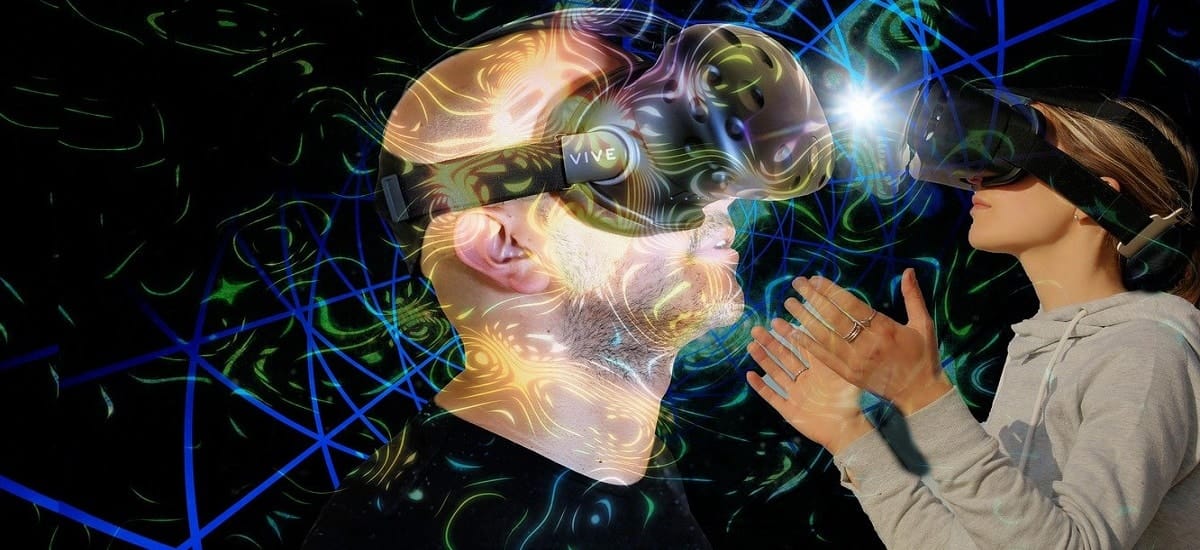Augmented Reality (AR) is set to revolutionize various aspects of our lives massively, and one prominent area bearing the brunt is social media and tech. According to a recent study, the global augmented reality market will reach a staggering $1,109.71 billion by 2030.
This highlights the significant impact of Augmented Reality in social media and the tech industry. As we move towards this reality, new opportunities for engagement, personalization, and immersive experiences emerge.
Let us explore AR and how it shapes the future of online experiences.
Introduction to Augmented Reality (AR)
Augmented Reality (AR) is an innovative technology that enhances our perception of reality by blending digital information with our real-world surroundings. In simpler terms, it means overlaying computer-generated images, videos, and other virtual elements onto our view of the natural world, usually through a smartphone or special AR glasses.
With AR, we can see both the physical world and digital content simultaneously, creating a unique interactive experience. Unlike virtual reality (VR), which immerses users in a completely virtual environment, AR enriches our real environment by adding digital layers.
AR technology relies on various sensors, cameras, and computer algorithms to achieve this. These components work together to understand and interpret the user’s real-world environment, allowing the virtual elements to interact realistically. The technology tracks the location, movement, and orientation of the device, aligning the virtual content with the physical objects.
The Rise of Augmented Reality in Social Media and Tech
Social media platforms have been quick to embrace AR technology. Snapchat’s popular filters and Instagram’s effects are prime examples of AR integration in social media apps. These platforms have significantly enhanced user engagement and creativity by enabling users to overlay animated effects, filters, and stickers on their photos and videos. In fact, 90% of social media users say that AR content is fun.
Here are ways in which Augmented Reality has become popular with social media:
Enhanced User Experience
One of the key reasons for the rise of augmented reality in social media is its ability to provide an enhanced user experience. AR allows users to bring digital content into the real world, blurring the lines between the virtual and physical realms.
By integrating AR features into social media platforms, users can transform photos, videos, and even live streams by adding filters, animations, or interactive elements, to make their content more captivating and entertaining.
With AR filters and effects, users can:
- Modify their appearance
- Change backgrounds
- Apply virtual objects to their videos or photos
This level of personalization not only adds a fun element to social media but also allows individuals to express their creativity and stand out from the crowd.
Marketing and Advertising Opportunities
Another major driver behind augmented reality’s rise in social media is its potential as a powerful marketing and advertising tool. Brands and businesses can utilize AR to create immersive and memorable promotional campaigns by integrating their products or services into users’ everyday environments.
For example, AR filters can allow users to:
- Try virtual makeup
- Visualize furniture in their homes
- Virtually test-drive cars
This helps businesses reach a wider audience and facilitates a deeper connection with consumers by providing a more tangible and personalized experience.
Influencer Engagement
AR has also revolutionized how influencers engage with their followers on social media. Influencers can create unique and eye-catching posts that captivate their audience’s attention by incorporating AR effects in their content.
These AR features allow influencers to inspire, entertain, or educate their followers in interactive and imaginative ways. Additionally, these effects encourage user interaction, fostering a sense of community and shared experiences.
The Future Prospects of Augmented Reality
Augmented Reality (AR) can potentially revolutionize various industries and aspects of our lives. Here are some key future prospects of AR:
- Education: AR will continue to provide immersive and interactive learning experiences. Students will be able to explore 3D models and virtual simulations to enhance their understanding and retention.
- Healthcare: Surgeons can access real-time patient data during operations, improving precision and reducing complications. AR will lead to high demand for diagnostic techniques which will be used for training healthcare professionals in simulating complex procedures.
- Retail: AR can enhance the in-store shopping experience. Customers can try on virtual outfits and visualize furniture in their homes, driving engagement and boosting sales. For example, Nike and Netflix have experimented with AR to try and amaze audiences by allowing them to virtually try their products in an interactive experience.
- Workplace: AR can streamline productivity and collaboration. As AR advances, maintenance technicians will seamlessly receive real-time instructions through AR glasses, reducing downtime. Remote collaboration will significantly improve to save time and resources.
- Entertainment: AR can revolutionize gaming and entertainment. Advancements in AR technology can lead to more immersive experiences, such as battling virtual monsters in your living room or playing virtual sports with friends in a park. The revenue generation by AR video games is expected to reach 11.4 billion by 2025, according to Customer Experience.
Final Remarks
The rise of augmented reality has brought about a paradigm shift in both social media and the tech industry. With its ability to seamlessly blend the virtual and physical worlds, AR has transformed the way we interact with technology and each other. This reveals the vast and exciting potential of Augmented Reality in social media and tech. As this technology continues to disrupt mercilessly, we can look forward to a future of endless possibility as the boundaries between the real and virtual continue to blur.
At Outreach Bee, we can assist you with your social media content marketing needs. Contact us today, and we’ll help you create a personalized social media content marketing strategy that seamlessly integrates with AR strategies for an immersive and engaging customer experience.



Which social media platform has the most potential to grow your brand in 2025?
Why Do Users Want Old Reddit Back?